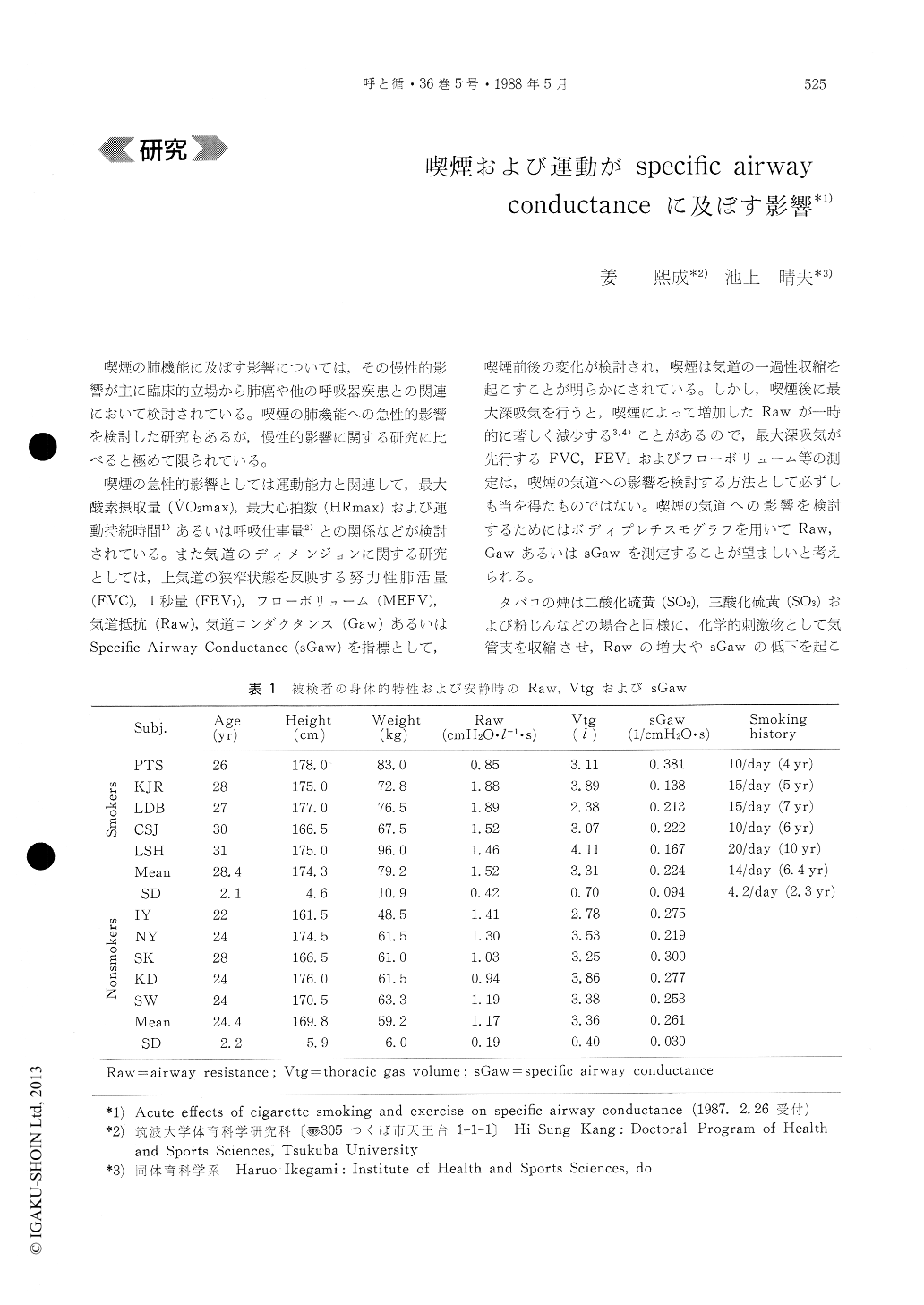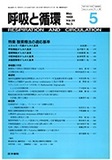Japanese
English
- 有料閲覧
- Abstract 文献概要
- 1ページ目 Look Inside
喫煙の肺機能に及ぼす影響については,その慢性的影響が主に臨床的立場から肺癌や他の呼吸器疾患との関連において検討されている。喫煙の肺機能への急性的影響を検討した研究もあるが,慢性的影響に関する研究に比べると極めて限られている。
喫煙の急性的影響としては運動能力と関連して,最大酸素摂取量(VO2max),最大心拍数(HRmax)および運動持続時間1)あるいは呼吸仕事量2)との関係などが検討されている。また気道のディメンジョンに関する研究としては,上気道の狭窄状態を反映する努力性肺活量(FVC),1秒量(FEV1),フローボリューム(MEFV),気道抵抗(Raw),気道コンダクタンス(Gaw)あるいはSpecifc Airway Conductance (sGaw)を指標として,喫煙前後の変化が検討され,喫煙は気道の一過性収縮を起こすことが明らかにされている。しかし,喫煙後に最大深吸気を行うと,喫煙によって増加したRawが一時的に著しく減少する3,4)ことがあるので,最大深吸気が先行するFVC,FEV1およびフローボリューム等の測定は,喫煙の気道への影響を検討する方法として必ずしも当を得たものではない。喫煙の気道への影響を検討するためにはボディプレチスモグラフを用いてRaw,GawあるいはsGawを測定することが望ましいと考えられる。
The antagonistic action of cigarette smoking and exercise on specific airway conductance (sGaw) was studied in ten human subjects including smokers and nonsmokers. To measure airway resistance (Raw) and thoracic gas volume (Vtg) a pressure type body plethysmograph equipped with a remote controlled bicycle ergometer was used. sGaw was calculated from Raw and Vtg using the equation sGaw=Gaw/ Vtg where Gaw=1/Raw.
In the first experiment one cigarette was smoked for five min and changes in sGaw were followed up for 30 min. In the second experiment exercise of 720 kpm/min was performed immediately after smoking for 10 min and changes in sGaw during and after exercise were calculated.
sGaw was decreased steeply by smoking and returned toward baseline gradually, but not completely recovered in a half hour. sGaw increased during exercise and recovered fast.
These findings suggest that airway dilating effect of exercise is so strong that airway constriction induced by smoking was completely cancelled.

Copyright © 1988, Igaku-Shoin Ltd. All rights reserved.


